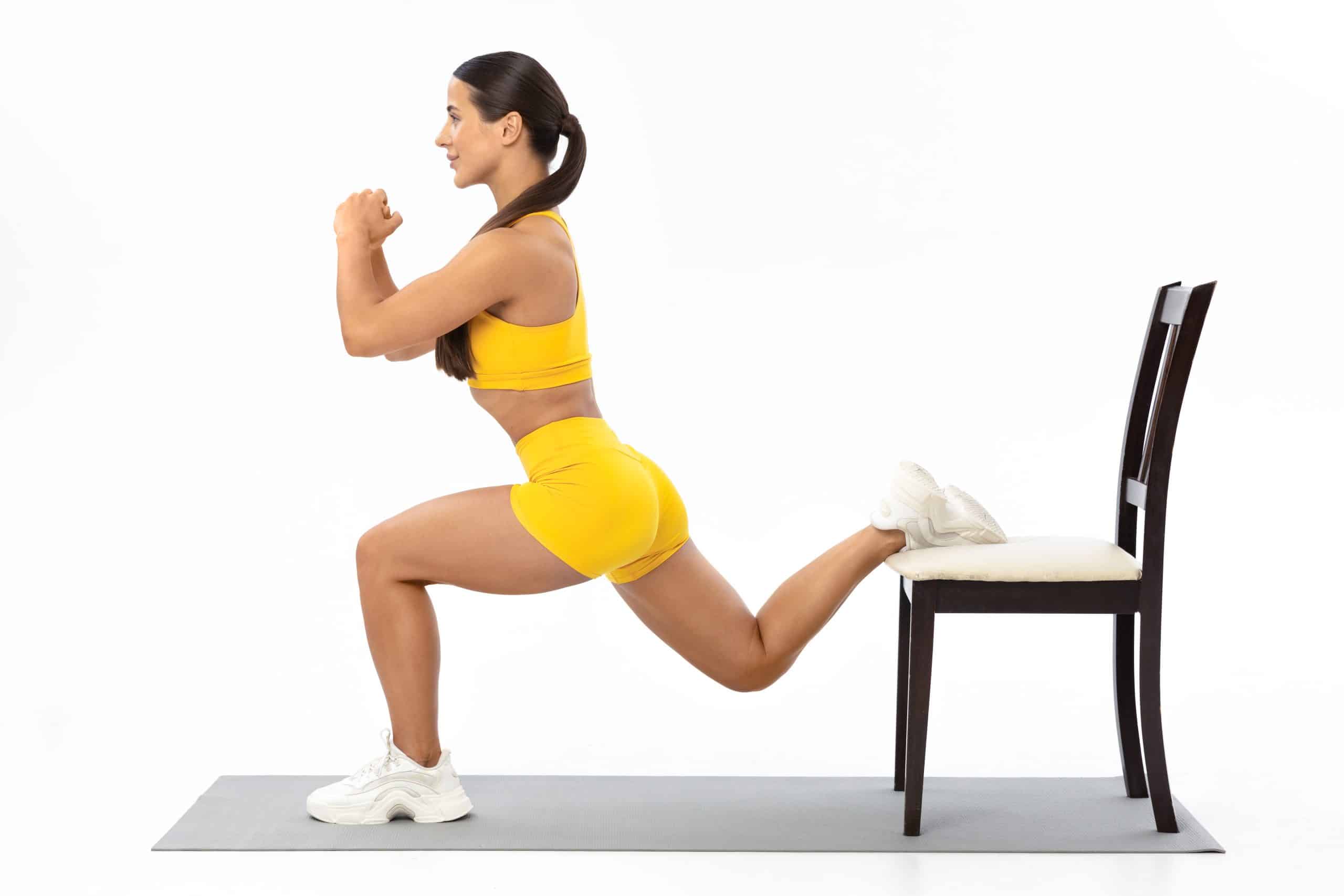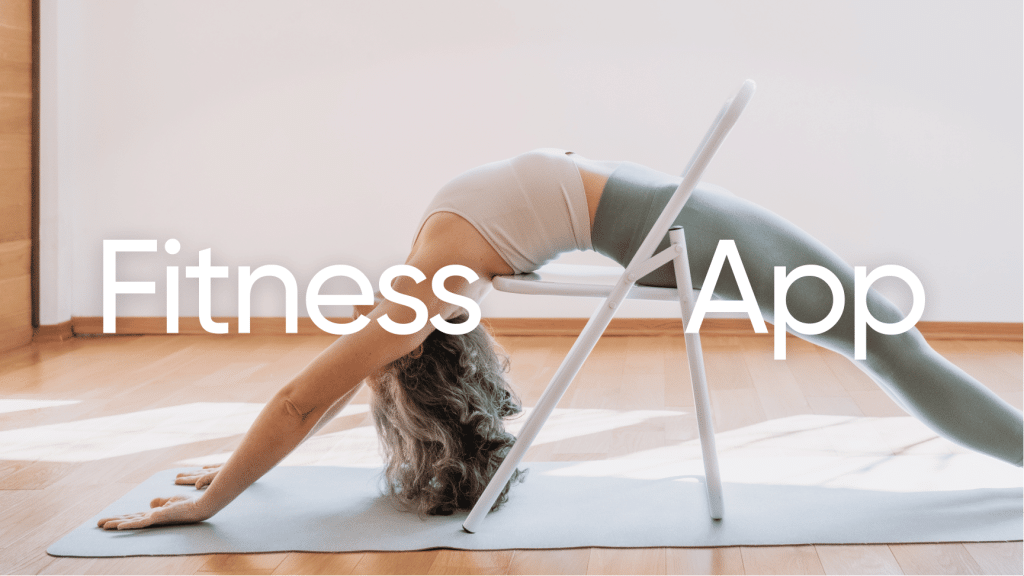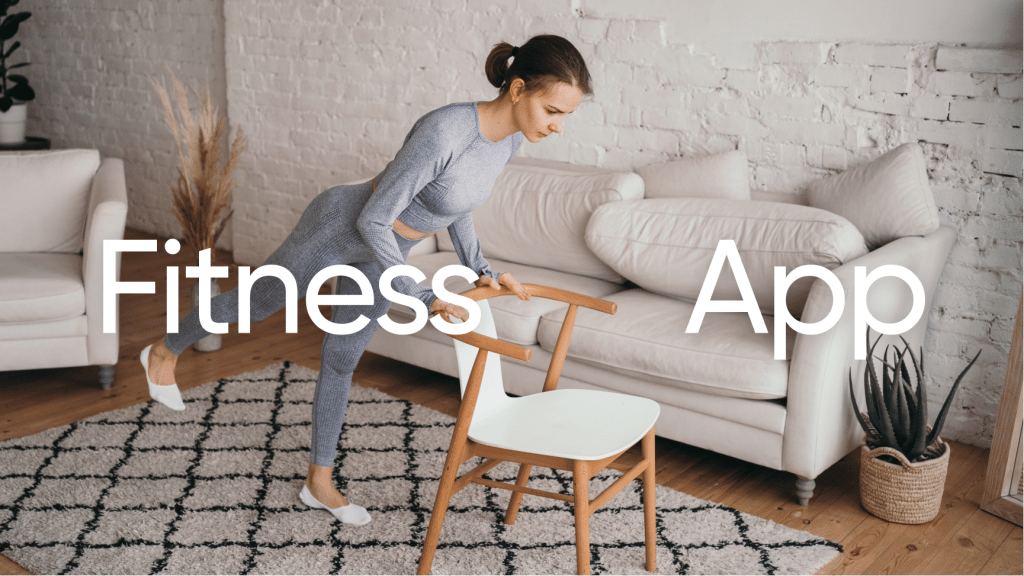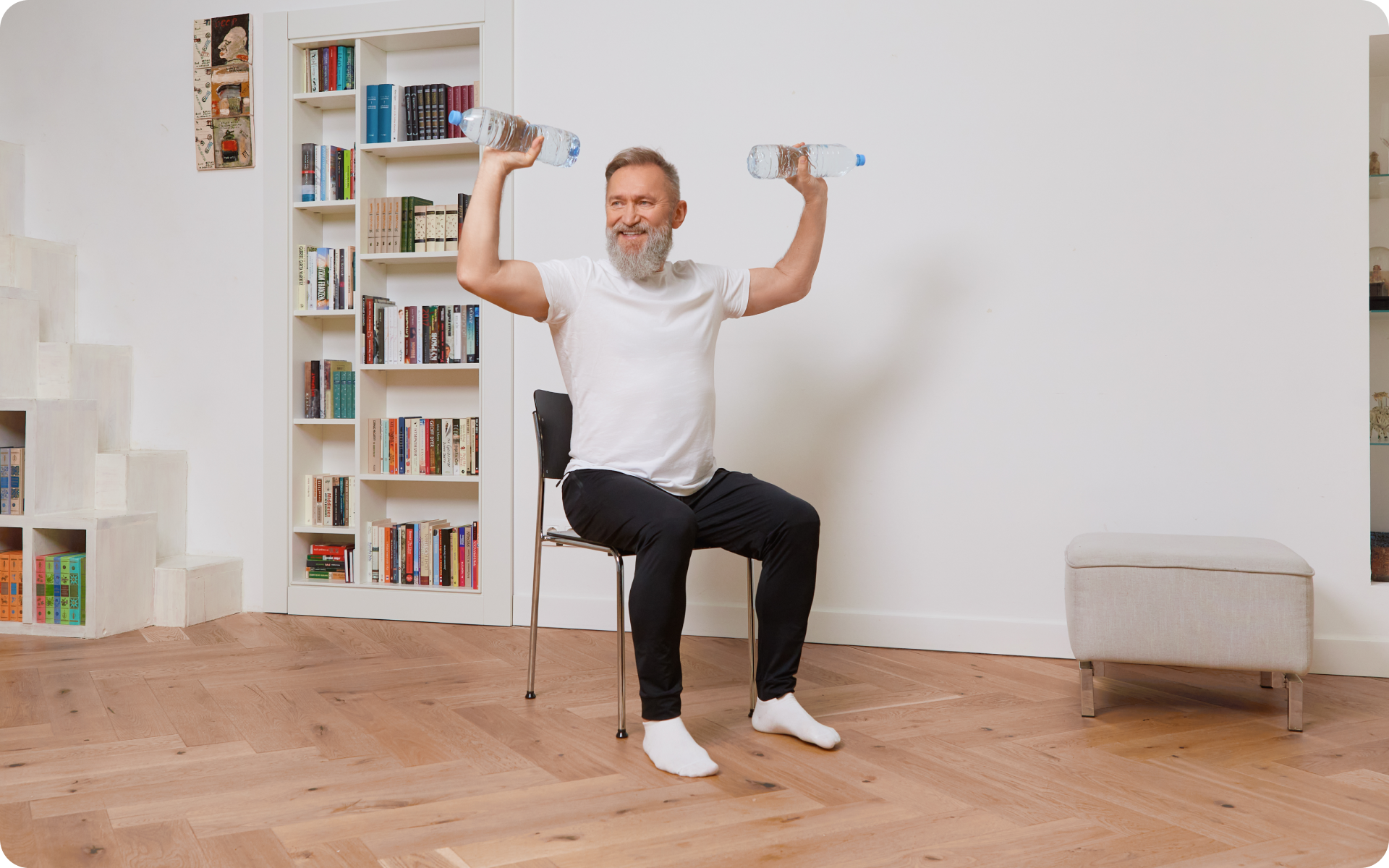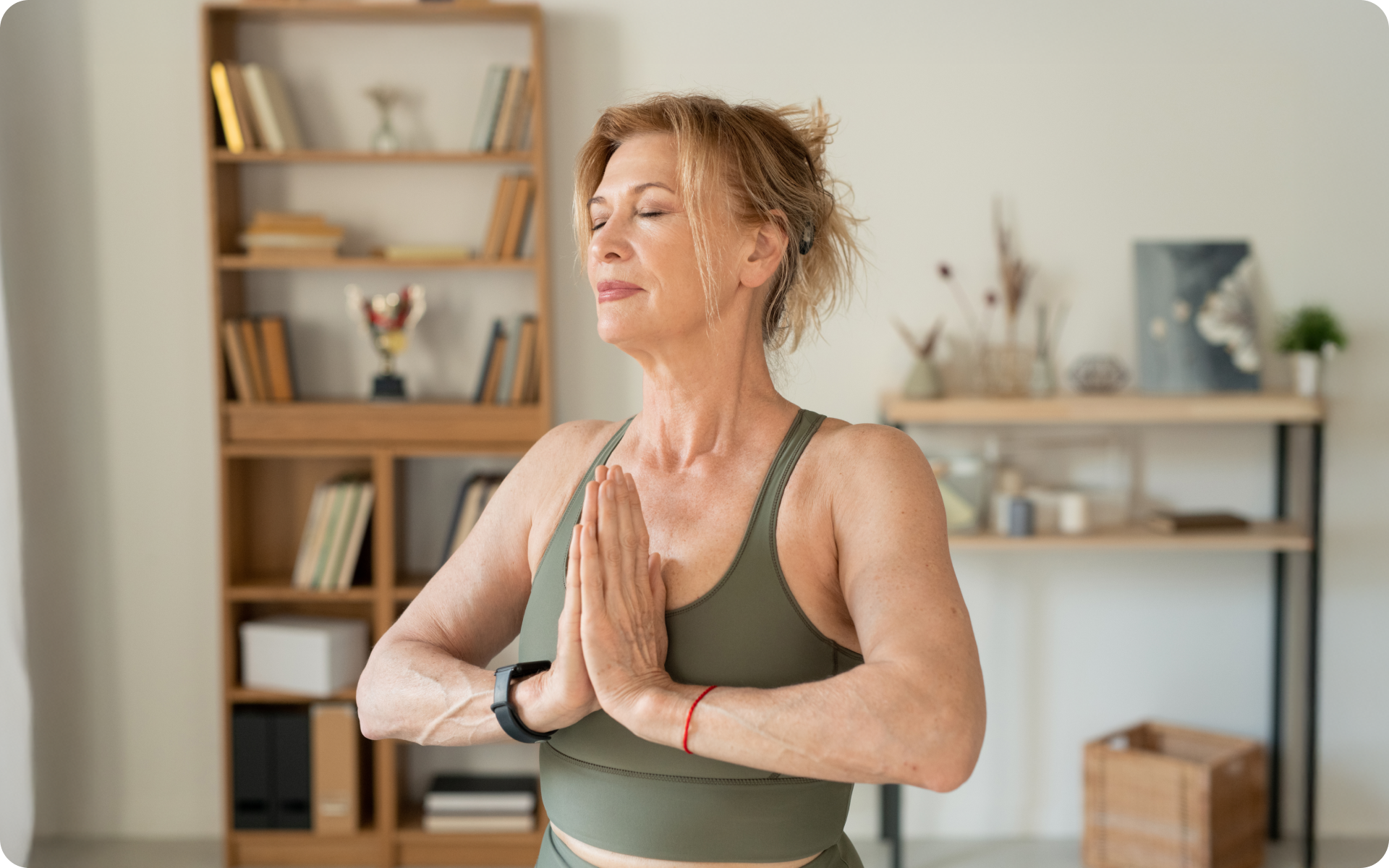When you think of exercise equipment, the first thing that probably comes to mind is a set of dumbbells or a treadmill. And if you have yoga in mind, the image of a mat on the floor is probably what comes to mind. But what if you don’t have any of that equipment? Or what if you’re not able to get down on the floor? That’s where chair yoga comes in! Chair yoga is a type of yoga that can be done either seated in a chair or standing using a chair for support. This type of yoga is perfect for beginners or anyone who has difficulty getting down on the floor. It’s also great for people who are limited in their mobility or are dealing with injuries. Chair yoga is a great way to get started with yoga, and it can be just as effective as traditional yoga. In this article we’ll answer all your questions about chair yoga, including what it is, its benefits, and how to do it.
What Is Chair Yoga?
Asanas are the foundation of a yoga practice. They are designed to stretch, strengthen, and promote flexibility (12). However, not all yoga poses are suitable for everyone.
People who have difficulty getting up and down from the floor, or who have other physical limitations, may find traditional yoga poses difficult or even impossible to do. Enter chair yoga.
Chair yoga is a type of yoga that can be done while seated in a chair, or while standing using a chair for support. It is an accessible form of yoga that benefits people of all ages and abilities.
Unlike traditional yoga, chair yoga does not require you to be super flexible or strong. It is a gentle and low-impact form of exercise that can help improve your overall health and well-being (5).
Who Can Do Chair Yoga?
This gentle form of yoga is suitable for just about anyone. However, it is especially beneficial for (4) (10) (11):
- People with limited mobility: whether due to age, injury, or chronic health conditions
- People who are new to yoga and want to ease into it gradually
- Pregnant women
- People who are looking for a low-impact form of exercise
- People who live sedentary lifestyles and want to add more movement into their day
Does Chair Yoga Work?
The benefits of traditional yoga are well-documented (3) (6) (8) (14). Luckily for those who cannot do traditional yoga, chair yoga has many of the same benefits. Some of the potential benefits of chair yoga include:
Increased Flexibility
The ability to bend, twist, and stretch is important, not just for yoga but for daily life as well. When you do chair yoga regularly, you may find that your range of motion gradually increases (5) (9).
This can make it easier to do activities like reaching for items on a high shelf or putting on your socks in the morning. With time, your range of motion may improve such that you can perform traditional yoga poses.
Read More: Chair Yoga Benefits: 8 Reasons Why You Should Do Seated Exercises
Improved Strength
Chair yoga can help improve your overall strength, including the muscles in your arms, legs, and core. It does this by using your body weight as resistance (8).
As you get stronger, you may find it easier to do everyday activities like carrying groceries or getting in and out of a car. Plus, stronger muscles can help protect your joints from injuries.
Better Balance
Yoga, in general, can help improve your balance (2).
While you may not be doing standing balance poses in chair yoga, the asanas can still help you develop better balance (13). They improve your mind-body connection and help you learn to control your body while in different positions.
This can come in handy if you ever find yourself off-balance, such as when you trip on a curb.
Relaxation
One of the main goals of yoga is to promote relaxation (1). Chair yoga is no different.
The slow, controlled movements and deep breathing can help you clear your mind and ease tension in your body. This can lead to improved sleep, reduced stress levels, and a general sense of well-being (7).
Types Of Chair Yoga Poses
There are many different types of chair yoga poses. Some poses can be done while seated in a chair while others require you to stand using the chair for support.
Here are a few examples of common chair yoga poses:
Chair Yoga Sun Salutation
This pose is a series of movements that are often done at the beginning of a traditional yoga practice. They help warm up your body and get your blood flowing. To do the chair yoga sun salutation:
- Sit up tall in your chair with your feet flat on the ground.
- Inhale and reach your arms up overhead.
- Exhale and fold forward, placing your hands on your knees.
- Inhale and lift your head, shoulders, and chest.
- Exhale and round your back.
- Inhale and reach your arms up overhead again.
- Exhale and return to the starting position.
- Repeat this sequence for 10–20 breaths.
Seated Mountain Pose
This pose is a good way to start your chair yoga practice. It helps you focus on your breath and connect with your body. To perform the seated mountain pose:
- Sit up tall in your chair with your feet flat on the ground.
- Relax your shoulders and lengthen your spine.
- Take a few deep breaths and focus on your breath.
Seated Cat-Cow Pose
This pose targets your spine. Spinal twists are important for improving flexibility and range of motion in your back. To do the seated cat-cow pose:
- Sit up tall in your chair with your feet flat on the floor.
- Place your hands on your knees.
- As you inhale, arch your back and look up.
- As you exhale, round your back and look down.
- Repeat this movement for 10–20 breaths.⁰0
- Seated Forward Bend: This pose stretches your back, shoulders, and hamstrings. It’s also a good pose for calming the nervous system. To do the seated forward bend:
- Sit up tall in your chair with your feet flat on the ground.
- Inhale and reach your arms up overhead.
- Exhale and fold forward, placing your hands on your knees.
- Relax your head and neck.
- Hold this position for 5–10 breaths.
BetterMe will provide you with healing and rejuvenating yoga exercises for beginners. Download the app on the Apple Store or Google Play, and enjoy magical results now.
Seated Twist
This pose stretches your back and shoulders. It also helps improve digestion. To do the seated twist:
- Sit up tall in your chair with your feet flat on the ground.
- Place your right hand on your left knee and your left hand behind you on the chair.
- Inhale and lengthen your spine.
- Exhale and twist to the left, looking over your left shoulder.
- Hold this position for 5–10 breaths.
- Repeat on the other side.
Supported Bridge Pose
This pose stretches your chest, neck, and back. It also helps improve posture. To do the supported bridge pose:
- Sit up straight with your back against the back of the chair.
- Place your feet flat on the ground and hip-width apart.
- Place your hands on your knees.
- Inhale and lift your hips, tilting your pelvis forward.
- Exhale and arch your back.
- Hold this position for 5–10 breaths.
How Often Should You Do Chair Yoga?
Chair yoga is a gentle form of exercise that can be done daily. If you’re just starting, you may want to practice chair yoga 3–4 times per week. That’s because your muscles will need time to adjust to the new movements and positions.
As your body becomes stronger and more flexible, you can increase the frequency of your practice.
How Long Will It Take To See Results?
That depends on your goals. If you’re looking to improve your flexibility, you may see results within a few weeks. If you’re trying to build muscle strength, it may take a few months to see significant results.
However, you’ll likely feel the benefits of chair yoga after your very first session. That’s because physical activity often has the immediate effect of improving mood and energy levels.
So even if you don’t see major changes in your body right away, know that chair yoga is still working its magic!
Should You Feel Sore After Chair Yoga?
Soreness is normal after any type of physical activity, including chair yoga. However, the soreness should go away after a day or two. If you’re feeling pain that lasts longer than that, it’s important to listen to your body and take a break from yoga.
Read More: Chair Yoga: Why And How To Get The Benefits Of Seated Exercise
How Can Beginners Get Started With Chair Yoga?
Beginners should follow these tips to get started with chair yoga:
- Start slow: Don’t try to do too much too soon. Begin with just a few poses and gradually add more.
- Listen to your body: If a pose feels uncomfortable, stop doing it. And if you’re feeling pain, take a break.
- Breathe: Don’t forget to breathe! Breath is an important part of yoga.
- Find a comfortable seat: A sturdy, comfortable chair is essential for chair yoga. Make sure the chair is at a height that allows your feet to touch the ground.
- Practice regularly: The more you do chair yoga, the better the results. Try to practice 3–4 times per week.
- Warm-up and cool-down: Before you start your yoga practice, take a few minutes to warm up with some basic stretches. And when you’re finished, do some gentle stretches to cool down.
- Combine it with other activities: Chair yoga is a great way to add movement to your day. But it’s not the only way. Combine chair yoga with other activities like walking, swimming, or Tai Chi to get the most benefit.
Chair Yoga On The BetterMe App
Starting out on your own can be daunting, and going to regular yoga classes isn’t always possible. That’s where the BetterMe app comes in to make things easier for you.
The chair yoga section has a series of easy-to-follow routines that target different areas. Pick the ones you like or need the most and add them to your daily routine. Watch the instructional videos to make sure you’re doing the poses correctly.
With gentle warm-up and cool-down stretches included, these workout sessions can easily become a part of your day. Choose between different durations and difficulty levels to find a routine that suits you.
The Bottom Line
Chair yoga is a great way to exercise at home, especially if you have limited mobility or are new to yoga. It’s also an effective way to increase flexibility and strength, improve posture, and calm the mind. Practice 3–4 times per week to see the best results.
DISCLAIMER:
This article is intended for general informational purposes only and does not serve to address individual circumstances. It is not a substitute for professional advice or help and should not be relied on for making any kind of decision-making. Any action taken as a direct or indirect result of the information in this article is entirely at your own risk and is your sole responsibility.
BetterMe, its content staff, and its medical advisors accept no responsibility for inaccuracies, errors, misstatements, inconsistencies, or omissions and specifically disclaim any liability, loss or risk, personal, professional or otherwise, which may be incurred as a consequence, directly or indirectly, of the use and/or application of any content.
You should always seek the advice of your physician or other qualified health provider with any questions you may have regarding a medical condition or your specific situation. Never disregard professional medical advice or delay seeking it because of BetterMe content. If you suspect or think you may have a medical emergency, call your doctor.
SOURCES:
- A randomised comparative trial of yoga and relaxation to reduce stress and anxiety (2007, sciencedirect.com)
- A Systematic Review of Yoga for Balance in a Healthy Population (2014, ncbi.nlm.nih.gov)
- Benefits and adverse effects associated with yoga practice: A cross-sectional survey from India (2021, sciencedirect.com)
- Chair yoga: benefits for community-dwelling older adults with osteoarthritis (2012, pubmed.ncbi.nlm.nih.gov)
- Effectiveness of Chair Yoga for Improving the Functional Fitness and Well-being of Female Community-Dwelling Older Adults With Low Physical Activities (2019, journals.lww.com)
- Effects of Yoga on Mental and Physical Health: A Short Summary of Reviews (2012, hindawi.com)
- Establishing key components of yoga interventions for reducing depression and anxiety, and improving well-being: a Delphi method study (2015, biomedcentral.com)
- Exploring the therapeutic effects of yoga and its ability to increase quality of life (2011, ncbi.nlm.nih.gov)
- Impact of 10-weeks of yoga practice on flexibility and balance of college athletes (2016, ncbi.nlm.nih.gov)
- Safety and feasibility of modified chair-yoga on functional outcome among elderly at risk for falls (2012, ncbi.nlm.nih.gov)
- The Effect of Chair Yoga on Biopsychosocial Changes in English- and Spanish-Speaking Community-Dwelling Older Adults With Lower-Extremity Osteoarthritis (2016, ncbi.nlm.nih.gov)
- Yoga: Its Origin, History and Development (2015, mea.gov.in)
- Yoga-based exercise improves balance and mobility in people aged 60 and over: a systematic review and meta-analysis (2021, academic.oup.com)
- Yoga research review (2016, sciencedirect.com)
